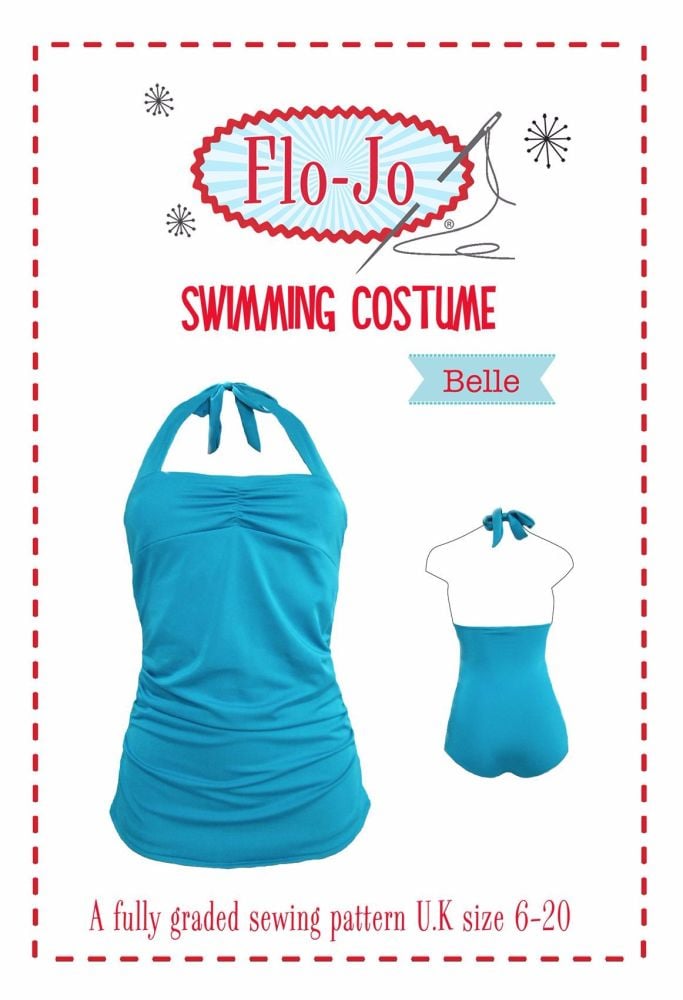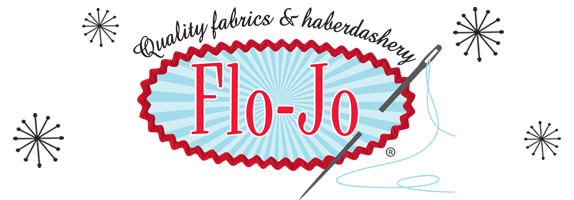Flo-Jo Swimming Costume Belle!
Posted on
Happy Saturday everyone,
The sun is shining here in Bristol and we are feeling inspired to start sewing things for our spring/summer wardrobes! What is the most summery piece of clothing you can think of?
For us it has to be a swimming costume and as it happens we've got a brand new sewing pattern to share with you, meet Belle!

Our Flo-Jo Swimming costume 'Belle' is a fully graded sewing pattern in sizes UK6-20. Aimed at confident beginners and intermediate sewers, this pattern features a flattering vintage styled fit with a gathered front panel, halter neck tie and inner bust support. Included in the pattern are clear instructions and diagrams to guide you along!
If you have worked with stretch fabrics before, making your own swimming costume is a great next level skill! At first it might seem intimidating, but with a couple of cups of tea and some focus you can make it yourself!
Once you've got the pattern you need to get all of the supplies! We know sourcing swimwear fabric can be difficult so we've done it for you! In our webshop you can find 5 different prints all at £12 per meter. We also stock clear elastic as well as soft waistband elastic which we've got in 6 different pops of colour!We recommend using a 100% polyester thread as it will create a longer lasting garment and is more durable for sewing swimwear.
You don't need an overlocker or a fancy sewing machine to make your own swimwear. We recommend using a stretch machine needle to prevent skipped stitches and for some seams you can use a twin needle. Test your stitch length and experiment with different width of zig-zag stitches on a piece of scrap to find the best combination for your seams.
If you would like to join us we are having an Instagram Party on the first bank holiday of May! Please share your progress and finished make using the #sewflojobelle
Get 15% off everything to make your own 'Belle'! Offer ends 30th of april.
Happy sewing!
